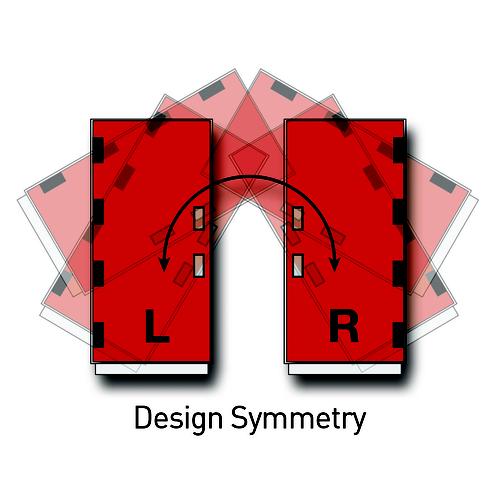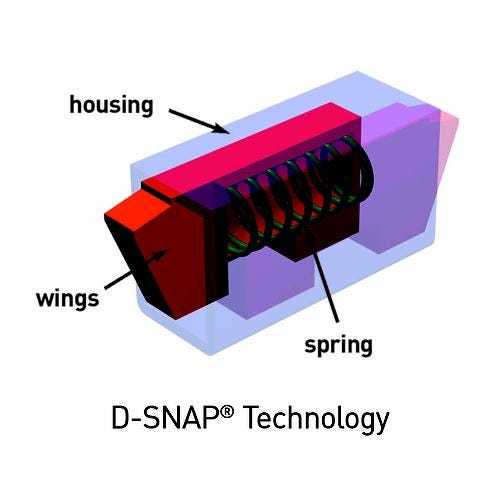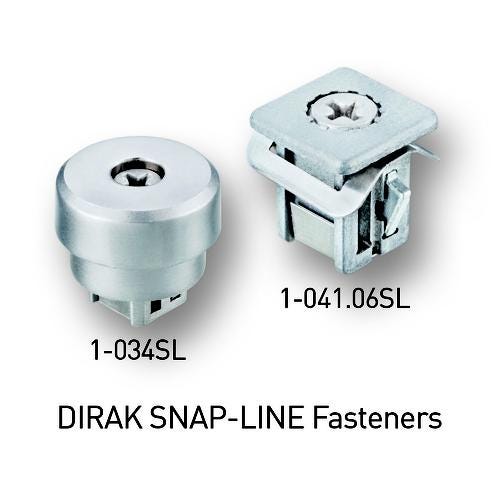Selecting Fastening Components to Optimize Manufacturing Efficiencies
March 8, 2013

When evaluating a fastener, latch, or hinge component for a new application, form, fit, and function are essential criteria. Design engineers must determine whether the product will provide the function needed by the end-user and with the level of quality the user expects. But the selection criteria do not stop there. As pressure to improve efficiency continues, engineers must consider how the selected component can optimize the entire manufacturing process, from specification to final production.
Five design considerations can significantly affect the fastener, latch, and hinge selection process, and can improve operational efficiencies when considered early in the design phase. They are process reliability, tool-less installation, modular design, design symmetry, and throughput efficiencies.
Process reliability
Getting it right the first time is the key to achieving a zero defect installation and an optimized process. The design of fasteners, latches, or hinges can contribute to achieving these goals. In applications where access to the back of the panel is limited, engineers should look for products that allow for blind installation from the front of the panel. Products that snap in to panels are ideal for these applications, as they can be installed quickly on the assembly line. Being required to gain access to the back of a panel is cumbersome, time consuming, and results in a slower assembly process.


Another important consideration is to select fastening components that clearly indicate when they have been properly installed. Snap-in products give a clear, audible indication when a secure attachment to the panel has been achieved. This reduces the possibility of human error, which is far more prevalent when secondary tools such as torque wrenches must be relied on for secure installation.
With snap-in products, visual inspection may also confirm that the product has been properly installed. For example, because D-SNAP Technology wings retract and engage again once the product has been completely pushed through the panel cutout, a visual inspection is also possible on the assembly line. Products that are installed by traditional screw-on methods using bolts, nuts, and washers can give the false impression that they are properly and securely attached to the panel. However, if the mounting hardware has not been securely fastened, the product can loosen or disengage.
Tool-less installation
Fastening components that feature a tool-less installation process eliminate tools, mounting hardware, and costly installation equipment. These types of products dramatically decrease the assembly time of the hardware installation, a common bottleneck in the overall assembly process. Tool-less products can be installed in seconds by simply pushing the product through the panel cutout by hand.
For applications that will be subjected to heavy load and vibration environments, engineers may want to consider products that feature D-SNAP Technology. A uniquely designed housing system holds two wedge-shaped, spring-loaded wings used for attachment to the panel. These wings retract as they slide through the panel cutout and snap into position once the product is inserted completely through the cutout, ensuring a secure, vibration-resistant connection.
Because installation tools and mounting hardware -- such as bolts, nuts, and washers -- are not needed, inventory levels are reduced. In addition, the concern of mounting hardware becoming loose over time, and falling onto and damaging sensitive equipment inside the unit is also eliminated. By selecting products that offer tool-less installation, operational efficiencies can be achieved through reduced installation time and improved quality.
About the Author(s)
You May Also Like





